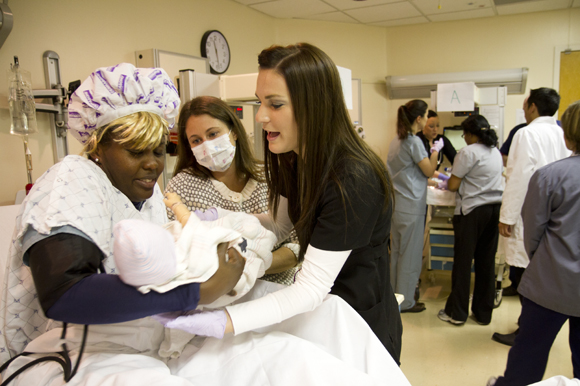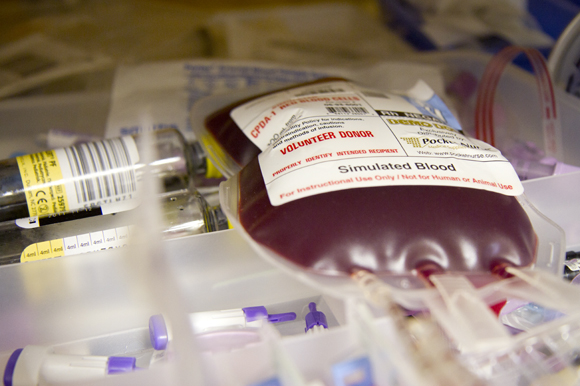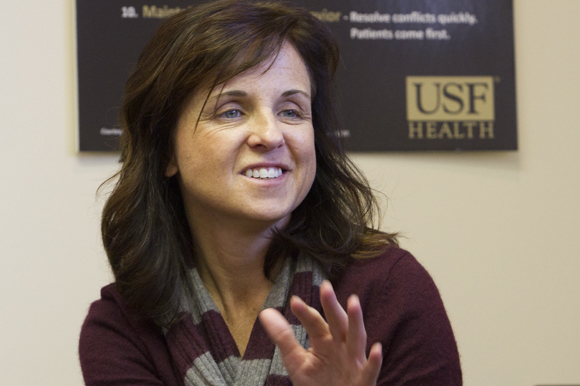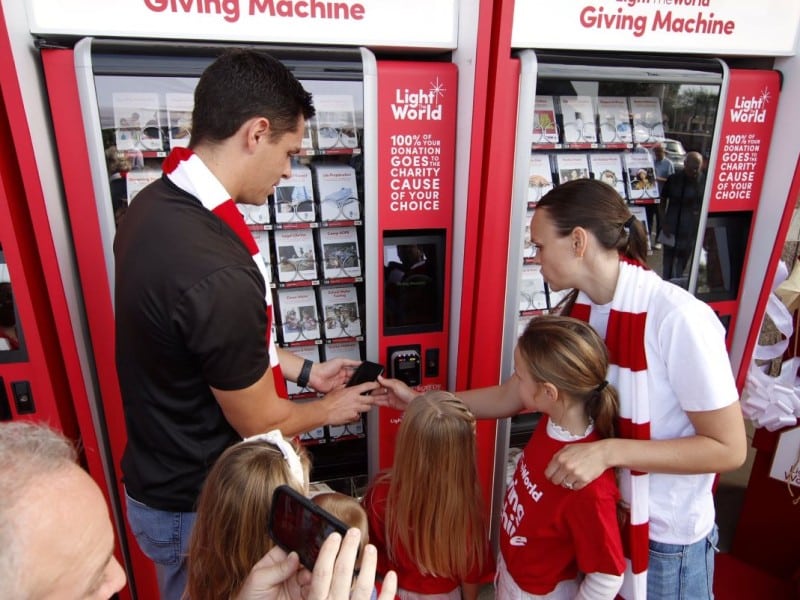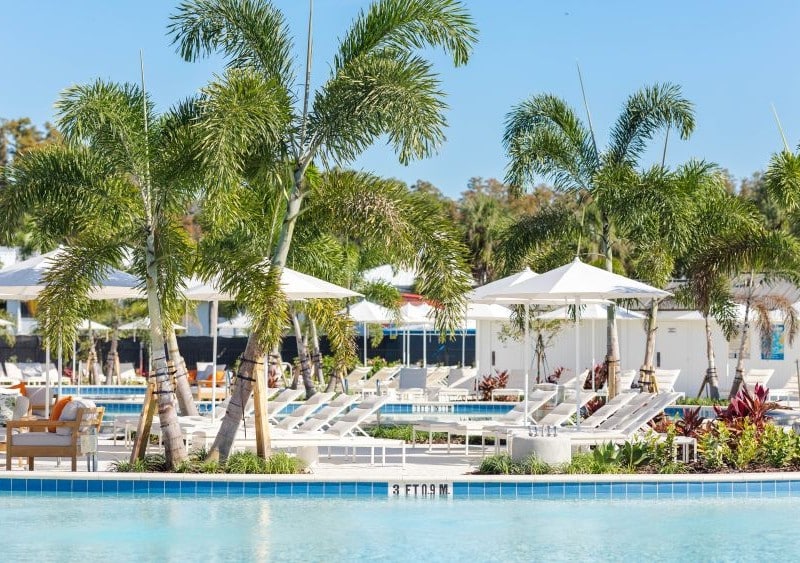USF Health Prepares To Open Medical Simulation Center, Downtown Tampa
When the University of South Florida opens its $38 million Center for Advanced Medical Learning and Simulation in February, it will put Tampa on the map as the "go-to'' place for training using the latest high-tech robot patients that do everything but talk. The new downtown medical facility is designed as a state-of-the-art educational place for health care professionals to test their skills in scenarios that mimic real-life — everything from surgery and trauma to childbirth.
“What’s going on? Why isn’t my baby crying?” the mother says anxiously. The delivery was difficult and the infant, born a few weeks premature, is blue and not breathing.
Within seconds, the labor and delivery nurses call for back up; the door swings open, and the neonatal resuscitation team charges in, whisking the tiny baby over to a warming incubator.
The sudden surge of adrenaline is almost palpable as a tight circle forms around the infant and people begin calling out orders. A nurse checks the baby’s heart rate. Someone else starts CPR. Supplies are ripped open. A chest tube is inserted and oxygen administered. The clock is ticking as the team does whatever is necessary to save the baby’s life.
Except the baby is a mannequin and this is a simulation at the University of South Florida’s Team Education and Multidisciplinary Simulation Center (TEAMS).
In a separate room, Laura Haubner, M.D., the 40-something director of the center, and several instructors wear headphones so they can listen in on the conversations taking place. They also watch the action unfold on a small monitor on the desk in front of them. In fact, the entire scenario has been caught on video. There are no secrets here.
Welcome to the world of medical learning and simulation, a new trend in medicine that USF has embraced wholeheartedly.
“What happened in there?” asks an instructor after the group reconvenes for a quick debriefing once the “baby” has been resuscitated.
One nurse admits she felt overwhelmed at times. Another says there were a lot of distractions. Someone else says it felt chaotic and disorganized.
“What would you do different next time,” asks the instructor.
The atmosphere is not punitive. It’s more like a coaching session — a free-flowing give-and-take discussion, much like athletes might do in reviewing and discussing video to see where they can tweak their performance. And that’s the point, says Haubner.
“We design the simulations to create the stressors of real life, to help people deal with bumps in the road and tease out their weaknesses,” says Haubner. “The goal is to make the blood rush and push people into overdrive just like an actual critical situation.”
A champion of using simulation technology to improve the training of health care professionals, Haubner says the old model of medical education centered on test taking and listening to a four- or five-hour lecture.
The new model emphasizes simulated real-life scenarios, which tests not just professional competency, but also skills important to teamwork like clear communication, delegation, conflict resolution, leadership and what to do in a crisis.
That concept is about to jump to the next level when USF opens the Center for Advanced Medical Learning and Simulation in early February.
A Unique Learning Environment
More commonly known as CAMLS, USF’s new three-story, 90,000-square-foot facility is a $38 million showcase of simulation technology. The center is designed to attract thousands of doctors, nurses and other health care professionals, including military medics, to participate in education and training.
Research will also take place there. The Tampa Bay Research and Innovation Center will function as a “think tank” for physicians, engineers, computer experts and business partners to work together on new technology, surgical instrumentation and medical devices that potentially can be spun off for commercialization.
CAMLS’ virtual patient care center, sort of a simulated hospital with an intensive care unit, emergency department, operating rooms, pharmacy and patient exam rooms, will offer a unique learning environment.
Haubner has been named medical director of the patient care center, which features high-fidelity adult, pediatric and infant mannequins that breathe, cough, yell, jerk, have heartbeats and turn blue. And just like the TEAMS Center, all the rooms will be wired for audio and video so instructors can observe and replay the action later with the team.
“Feedback gives us a chance to focus on behaviors that we want to encourage or correct,” says Nikki Campbell, RN, MSN, assistant director of the virtual patient care center. “Training in a simulated medical situation gives people a chance to improve their skills in a risk-free environment with no ramifications on a patient’s life. That is huge.”
Physicians will get to practice their skills in a simulated environment, too. Some 30 surgical skills stations will allow doctors to learn, practice and test their competency on the latest endoscopic, minimally invasive and robotic surgery techniques.
USF is not the only academic center in the country using medical simulation training. But what is unique about CAMLS is that teams of doctors, nurses and other health care professionals will be training together, a concept that Steve Klasko, M.D., dean of the USF College of Medicine, says is critical to the future of medicine.
Medical Teams Training Together
Why is teamwork so important? Knowing how to work well as a team can be key to reducing medical errors and improving patient safety, says Haubner.
“It’s also part of a changing medical culture that is moving away from a focus on any one individual to more of a systems approach,” she says. “It allows the boundaries to melt away.”
Campbell calls CAMLS a “game-changer, both for the future of medical education and for the City of Tampa.”
“It will also open a lot of doors for the City of Tampa by bringing in business from around the country and internationally,” she says.
Paul Ayres, director of business development for CAMLS, agrees. He’s been busy reaching out to meeting planners who might never have thought of Tampa as the site of the next major medical conference. That is no longer the case. CAMLS is positioned to be a bright new star for both USF and downtown Tampa. And the building’s location in downtown Tampa’s Channelside District near the Tampa Convention Center was no accident.
“CAMLS’ proximity to the convention center, restaurants, hotels, museums, sports teams and more will make it easy for people from out of the area to get around and to enjoy local entertainment,” says Ayres. ”We have a unique opportunity here.”
Janan Talafer is a freelance writer in St. Petersburg, FL, who shares a home office with her dog Bear and two cats Milo and Nigel. Comments? Contact 83 Degrees.

